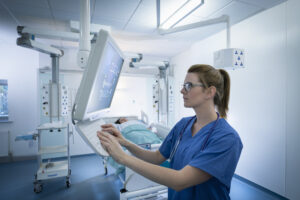
Creating the right environment for smarter working
Last month, head of the Government Property Unit Bruce Mann set out a clear vision for transforming the civil service through smarter working.
Speaking at the launch of a new government-wide code of practice on smart working – the PAS3000 – and the second The Way We Work Awards, the property chief said he believed that the civil service and other public sector organisations must not only embrace smarter working, but should be at “the leading edge” of transforming the way people work.
He said: “If you’re trying to recruit and retain the best people and you’re not offering the kind of workplace and work life environment that fits with their lives, you aren’t going to do it.”
To date, Whitehall has made small steps towards introducing smarter working initiatives across departments not only to deliver reform plans to create a desirable working environment for staff, but to drive down costs of government property and help departments reduce office overheads.
For example, earlier this month Cabinet Office minister Matthew Hancock announced plans to reduce the number of buildings occupied by government departments by 75% by 2023 as part of a “Government Hubs programme”. Aiming to move departments from individual office blocks into 18-22 “multi-departmental hubs”, smarter working initiatives will play a central role in shaping how these hubs are structured, furnished and delivered.
Defined by the Chartered Institute of Personnel and Development as a way of organising the working environment “to drive greater efficiency and effectiveness in achieving job outcomes”, smarter working relies on giving staff flexibility and autonomy over available tools and workspaces to work productively.
In other words, smarter working is about offering staff the choice, on any given day, to decide what the most appropriate location is for the work they’re about to do. This could be the office, a coffee shop, home or on route to a meeting. Technology and software such as Skype for Business and Office 365 play a key role in enabling greater flexibility – find out more here – but creating the right working environment with the right tools is key.
With the hubs programme due to begin next year, we set out some of the things the civil service, and public sector organisations seeking to create similar hubs, will need to think about when adopting smarter working.
Breaking the mould
As Dave Coplin, Microsoft’s chief envisioning officer, points out in our latest e-guide on flexible working, most of our workplaces aren’t conducive to all the kinds of work we have to do.
Take, for instance, the open plan office. With no space to work privately, staff are more likely to get distracted – by a colleague for example – and can start to lose focus.
The notion that one person will do all their work at one desk is another example. As the workplace evolves, employees are finding new ways to work – through collaboration, physical experimentation or storyboarding – and digital solutions such as Office 365 are enabling greater fluidity in the way an employee approaches work. In other words, one desk in an open plan office is not the most productive place for an employee to work. In fact, according to the PAS3000 a typical occupancy of the traditional desk is less than 50%.
Find out more about breaking traditional work stereotypes here.
Creating different spaces in the office
While part of smarter working is about breaking away from the office and enabling employees to work from disparate locations depending on their schedule or workload, creating a flexible central hub for staff opting to use the office or needing to use meeting rooms is just as important.
According to the PAS3000, the ideal work space should “increase both the attractiveness and the productivity of the workplace when employees come in to use the facilities and to work together.”
As part of the design process, therefore, departments should consider what types of work staff will be doing on a day to day basis and shape the office space around that. This includes offering shared facilities such as ‘hot’ desks, activity hubs, areas for permanent office staff, and both formal and informal meeting spaces.
For example, activity-based projects will need flexible working spaces, team tables, spaces for social interaction or perhaps a special projects area while other types of projects may need a desk or a private space to enable staff to concentrate.
Getting the tools right
When thinking about the way employees work, however, it’s not just the space or the software departments and organisations need to think about. Creating the right environment also includes everything from the desks to the chairs to the mice to the headsets.
For example, if departments are thinking about creating a bank of team desks, how big will your desks be? If you are operating a clear desk policy – which means employees must clear away possessions after using the space – will you provide laptops?
If you are providing laptops, will you replace physical phones with online equivalents such as Skype for Business? If so, the next thing to consider is how employees will use this.
At Microsoft we provide all staff with headsets which they can use when calling via Skype or using Skype for meetings. Of course, as staff may not be used to the notion of using a headset rather than a phone, departments will need to consider the different types of headsets and which ones staff may feel more comfortable using.
Likewise, when considering collaborative spaces, what type of furniture is most appropriate? If the area is to be used by a number of different departments, should the space look formal or informal? Should sofas replace the traditional meeting room table and chairs, or would a formal meeting room suit more needs?




